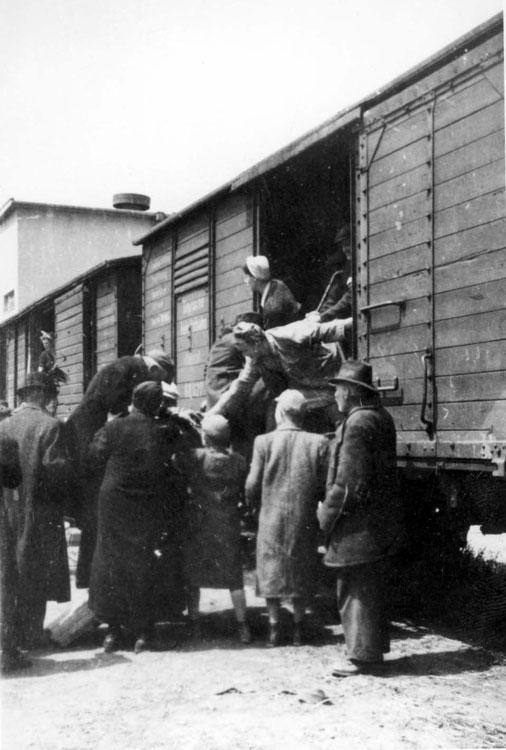In the early 1940s, some 2,600 Jews lived in Dunaszerdahely, Hungary, almost half the town's population. They were an orthodox religious community, and most of them were traders and artisans, but there were also factory owners and bankers amongst them.
In 1940, many of the town's Jews were recruited for forced labor in the Hungarian Army. The army confiscated Jewish community buildings, including the school, to house the forced laborers.
From 1942, Dunaszerdahely became a transit point for Jewish refugees escaping from Slovakia when the deportation of Slovak Jewry began. In Dunaszerdahely they would receive forged papers and assistance finding hiding places in Hungary.
The German Army occupied Hungary on 19 March 1944. SS units entered Dunaszerdahely two days later. They disbanded the Jewish communal institutions, and a Judenrat was established in the town. On 10 May, an order was issued to establish a ghetto in Dunaszerdahely. As well as Jews from the town itself, Jews from 72 villages in the Komarom district were confined in the ghetto.Police officers tortured the ghetto inhabitants in their attempt to find hidden valuables.
On 5 June, all the Jewish men in Dunaszerdahely were recruited for forced labor, and only women, children and the elderly were left in the ghetto. On 8 June, they were herded into the Great Synagogue and adjacent buildings, and deported to Auschwitz on two transports that departed on 13 and 15 June. This photograph was taken at the second deportation.
From May-July 1944, 438,000 Hungarian Jews were deported to the extermination camps, principally Auschwitz, where most of them were were gassed immediately upon arrival.







